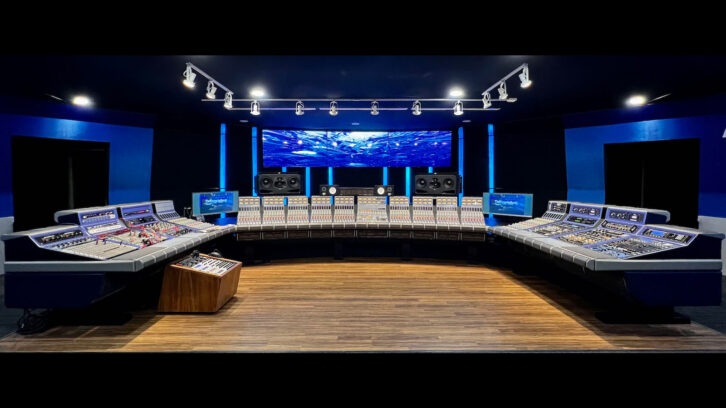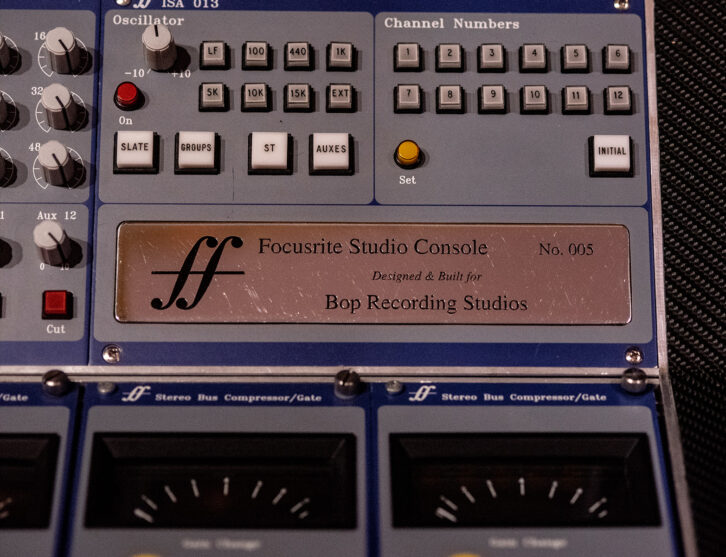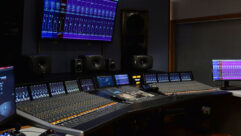
The rare desk, serial number 5, was installed in The Focusrite Room, a unique 1,500-square-foot control room, part of a 6,000-square-foot recording complex in the Phoenix area. The console was originally located at BOP Studios in South Africa, itself a pioneering world-music venture.
“Bringing Number Five back was a life-changing event,” says The Focusrite Room and Platinum Underground studio owner and longtime Focusrite aficionado, John Aquilino, referring to the nickname the desk has acquired. “When I was a teenager, instead of a poster of Farrah Fawcett on my wall, I had a picture of a Focusrite Studio Console, so you could say I’m a pretty big fan of the brand and its technology. Now, this console is ready for the next chapter in its life.”
BOP Studios began with the best of intentions: to be a world-class music-production facility in one of the world’s most remote yet creatively fertile locations. Political and economic complications—the country was under the oppressive thumb of apartheid when BOP opened in 1991—posed significant challenges to keeping the facility viable, and it has been closed for much of the last 20-plus years.

BOP was intended as a destination where African and Western artists and musicians could intersect and collaborate, with state-of-the-art technology, acoustical design (the studio’s architect was the legendary late Tom Hidley) and resort-level accommodations. The Focusrite Studio Console was a centerpiece in BOP’s flagship Studio 1, where it operated alongside consoles from Neve (Studio 2) and SSL (Studio 3); all three were the largest of their kind ever installed at the time. Visiting artists included Laura Branigan, Ladysmith Black Mambazo, Miriam Makeba and the Soweto String Quartet. Disney’s The Lion King soundtrack was also recorded and produced at the studio.
Platinum Underground, which opened in 2016, was designed by the late Vincent Van Haaff and is constructed 30 feet below ground. The new Focusrite Room is above and to the side of that.
Not surprisingly after all that time, the relocated console needed some refurbishing, which included a complete recapping and new switches, as well as the replacement of 4,600 LEDs. The restoration process was initially started by Joel Gette of Thermal Relief Design in Las Vegas before the desk was moved to its new site in the Phoenix suburb of Mesa for its full and complete restoration and recommissioning by Ken Hirsch and his team at Orphan Audio.
Once inside the studio, additional HVAC, with a custom plenum and silent-running fans, had to be installed to keep the console at a constant 72 to 74 degrees F. The console’s original pair of seven-foot-tall power racks have been replaced with just three feet of modern, high-efficiency supplies designed by Hirsch. The ancient GML automation is replaced with the Tangerine Automation Interface for GML Automation from THD Labs, which integrates directly with the console faders on a fader-by-fader, bucket-by-bucket basis, with all of that control information sent over a USB bus to the computer.
“The automation is now seamless and transparent between the hardware of the desk and the user’s DAW,” Aquilino explains. “Any user can come into the studio, fire up a session, load up this plug-in and just go, and not have to worry about knowing some archaic, proprietary software.”
The Focusrite Studio Console came back to life late last year and did a series of local productions, with Aquilino, an accomplished engineer for artists including Metal Allegiance, Sacred Reich and Soulfly, at the board.









